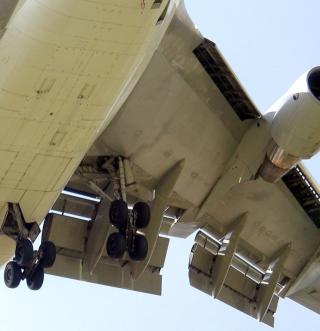Well if in doubt consult Wikipedia.
http://en.wikipedia.org/wiki/Lift_(forc ... ished_flow
We are dealing with flow at low Mach numbers (under the current regulations I can't see that changing) and so we can safely assume that flow viscosity and flow compressibility can be ignored.There are several ways to explain how an airfoil generates lift. Some are more complicated or more mathematically rigorous than others; some have been shown to be incorrect. Explaining lift while considering all of the principles involved [Newton's laws of motion, conservation of mass, fluid stresses] is a complex task and is not easily simplified. As a result, there are numerous different explanations of lift with different levels of rigour and complexity. For example, there is an explanation based directly on Newton’s laws of motion and an explanation based on Bernoulli’s principle. Neither of these explanations is incorrect, but each appeals to a different audience.
In incompressible and inviscid flow the Bernoulli equation is just an integration of Newton's second law—in the form of the description of momentum evolution by the Euler equations—along a streamline.
Just an interesting aside I had a look at hypersonic (Mach 5+) fluid dynamics where the flow is compressible and flow viscosity becomes important considerations.
http://www.aerospaceweb.org/design/wave ... ider.shtml for some more information for the curious.The waverider design was evolved from work done in the U.K. in the 1950's and early 1960's on winged atmosphere re-entry vehicles. Terence Nonweiler had first published work on the waverider concept in 1951, when he suggested the use of a waveriding wing shape for atmospheric re-entry vehicles. By the late 1950`s, Nonweiler, then at Queen`s University, Belfast, was working on the mathematics concerning basic 'wedge' flow for a manned re-entry vehicle developed by Armstrong-Whitworth Aircraft Ltd, to be launched off the nose of the British Blue Streak rocket (sadly cancelled).
To ease his calculations, he started by assuming a 2-D flow as seen from the side, i.e. no spillage. Nonweiler, while lamenting the fact that in 3-D, the underside flow would spill over the sides, causing cross-wise components of flow complicating his calculations, and causing loss of lift, decided to find a way of preventing the spillage.
He did this in order to keep his 3-D equations essentially 2-D, but realised that real hypersonic vehicles could utilise this principle, known as (shock) Wave-riding to improve their lifting performance.
Now there are some incorrect demonstrations of the generation of lift by an aerofoil in steady flow, for example using the Coanda Effect (which describes the tendency of a fluid jet to stay attached to an adjacent surface and is applicable to the blown wing explanation)
godlameroso wrote:The way F1 cars generate downforce is by spoiling the air over the car slowing it down relative to the underside. To demonstrate hold a piece of paper vertically so that it is parallel to your chest, then blow across the surface nearest to you. Make sure that you don't blow directly on the surface of the paper but rather across it's surface. You will notice that the paper moves closer to your body, this is because the pressure on the opposite surface of the paper is higher, than on the side you are blowing across. The harder you blow the more the paper moves towards your chest.
http://en.wikipedia.org/wiki/Coand%C4%83_effect
More broadly, some consider the effect to include the tendency of any fluid boundary layer to adhere to a curved surface, not just the boundary layer accompanying a fluid jet. It is in this broader sense that the Coandă effect is used by some to explain lift. Jef Raskin, for example, describes a simple demonstration, using a straw to blow over the upper surface of a wing. The wing deflects upwards, thus supposedly demonstrating that the Coandă effect creates lift. This demonstration correctly demonstrates the Coandă effect as a fluid jet (the exhaust from a straw) adhering to a curved surface (the wing).
There are some nice diagrams on the Wikipedia webpage by the way.However, the upper surface in this flow is a complicated, vortex-laden mixing layer, while on the lower surface the flow is quiescent. The physics of this demonstration are very different from that of the general flow over the wing. The usage in this sense is encountered in some popular references on aerodynamics. In the aerodynamics field, the Coandă effect is commonly defined in the more limited sense above and viscosity is used to explain why the boundary layer attaches to the surface of a wing.
Now if we want to establish the benefits of a multi-element wing then a few diagrams would not go amiss. If you can show some approximation of the streamlines http://en.wikipedia.org/wiki/Streamline ... _pathlines it will give an indication of flow speed of each streamtube and the Bernoulli's principle can be applied to guess at the pressures around each element. Then I might start to understand some of your explanations.



